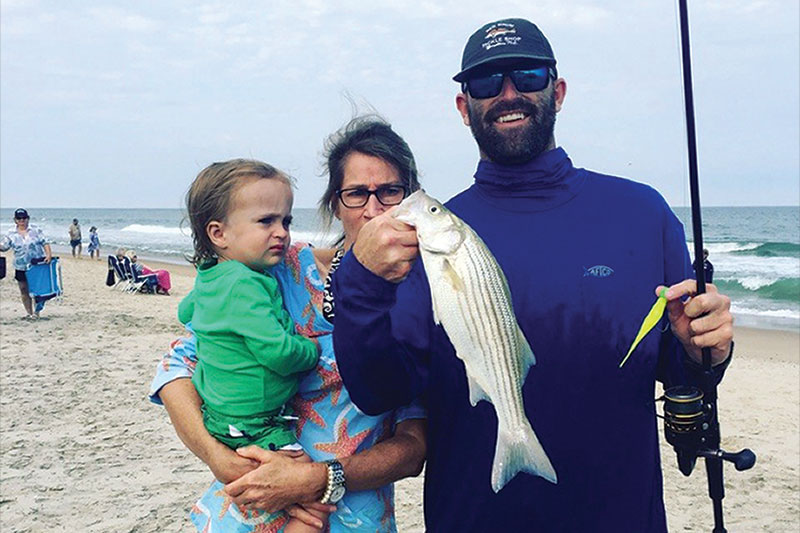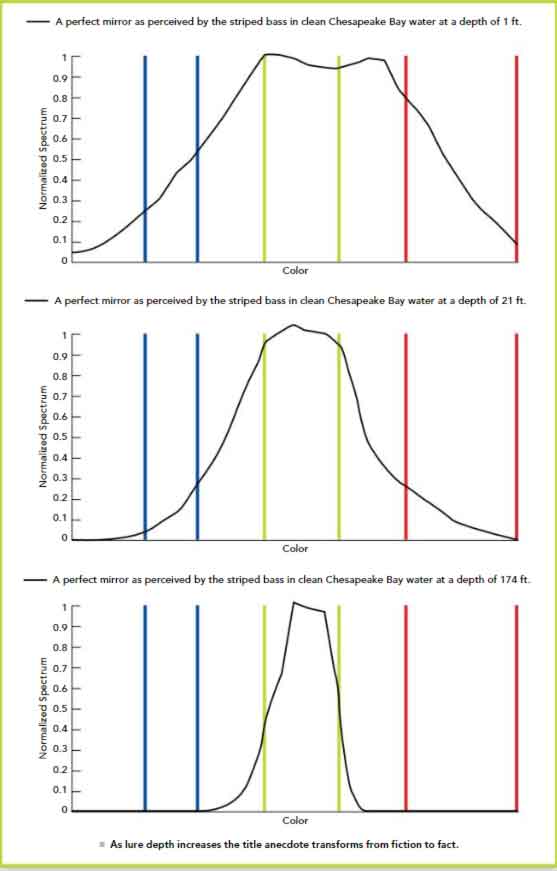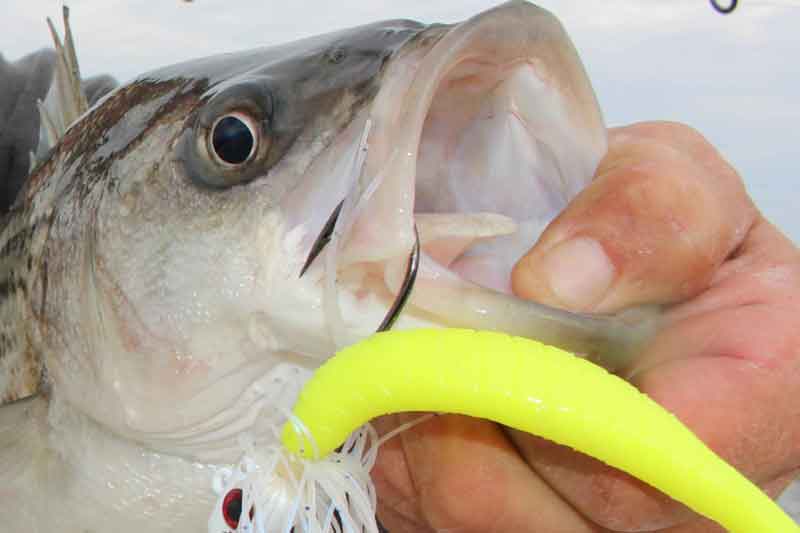Chances are the title anecdote is engrained deep in your subconscious, whether you grew up fishing the Chesapeake Bay or simply visited a local tackle shop while passing through the watershed. For those of us that fall into the former category, we likely accepted this as truth largely by way of trust in our mentors, followed by empirical validation of our own. Walk down any aisle in a local tackle shop, however, and you’ll be presented with a wide spectrum of color choices, most if not all of which will catch fish under certain conditions. So, what is it about chartreuse that made this particular color so pervasive that it was immortalized by the late great Lefty Kreh? To be honest, I never truly asked myself this question until I began to look at the problem through the lens of optics. A quick Google search of “if it ain’t chartreuse it ain’t no use” will present similar takes by local experts, so I make no claim to be the first to broach the subject. That being said, let’s consider the results of a simple optical analysis of the subject.

A wise man once taught me to seek simple models that develop physical intuition. Implicit in this statement is that these simple models must be constructed with physics that sufficiently describe the phenomenon which we seek to understand. In this light, let us reduce the complexity of the problem from which we derive such simple pleasure: to elicit a visual reaction strike in the daytime, light rays emanating from the sun must first travel through the vacuum of space for tens of millions of miles before reaching the edge of Earth’s atmosphere. At this interface, worldly optical phenomena begin. Some of these rays are reflected back into space in a mirror-like fashion, while the remainder pass through. Most of the time these rays are bent onto a new path when entering Earth’s atmosphere. For these rays to reach Earth’s surface, they must then travel along a path on which some rays are misdirected and/or plucked from thin air, by a variety of atmospheric constituents such as gaseous molecules and suspended particulate. Each ray of light represents a single color and the number of these rays that are misdirected and/or plucked from thin air depends on that color. As such, the color content at the edge of Earth’s atmosphere will differ from that on the Bay’s surface.
The process described above is again at play when a new interface (such as water) is introduced. The optical model described here therefore considers that rays reaching the Bay’s surface(1) are subject to being reflected, passed through, bent, misdirected(2) and/or plucked from the water column(2) all before being reflected by a lure. A perfect mirror for which all colors are completely reflected has been used instead of a lure of specific color (we’ll assess the effect of this lure choice soon enough). A detector with the daytime color response of the striped bass’ retina(3) has been situated immediately following the perfect mirror to complete the model. This color response is measured by electroretinography and accounts for the fact that not all colors are equal, as far as the striped bass’s retina is concerned. The results of this simple analysis are presented for clean Bay water at a depth of one foot, the average depth of the Bay (21 feet) and the deepest spot in the Bay (174 feet).

At a depth of one foot, most of the color content that was present on the Bay’s surface has persisted and the effect of the color response of the striped bass’ retina is prominent. You’ll notice that the color response of the striped bass’s retina tends to rank colors in the chartreuse band as being most significant, although at this shallow depth most colors are still at your disposal in terms of lure selection. In proceeding to 21 feet, a depth to which you’ve undoubtedly dropped a jig or two, the progressive action of the plankton-filled water column acts like a sponge for blue and red colors. As well, as the pickiness of the striped bass’ retinal color response has begun to turn our perfect mirror into a chartreuse mirror. At a depth of 174 feet, the kind of optical transformation that striped bass dream about has effectively completed.
Not a fan of even the simplest of models without empirical validation? Neither am I. You may take some comfort in that Navy divers at depth in the Long Island Sound most commonly reported white targets as green, white, and yellow(4) – in that order. Keep in mind that that chartreuse is also referred to as yellow-green. Still not convinced? Well I’ll need the help of our community to take this argument further. For the underwater photographers in the audience, I’d like to present an open challenge to get images of a chartreuse and white lure falling into the depths of the Bay, as viewed through a filter corresponding to the color response of the striped bass’s retina.

Let’s take a moment to reflect once more on the title anecdote. Regardless of whether or not striped bass can distinguish between individual colors or their brains simply rank colors differently, you’d best consider choosing a lure color that reflects or misdirects yellow-green, such as chartreuse, if you’re fishing at depth and want to elicit a visible reaction strike. As to the veracity of “if it ain’t chartreuse it ain’t no use,” you already knew that in reality it’s not absolute. To flip the script, you might consider choosing a lure color (such as black) that strongly plucks chartreuse from the available light for optical contrast to the yellow-green aquatic environment.
Don’t get out your pitchforks just yet—I’ll be danged if you see me throwing anything other than chartreuse on the first cast. That is unless we’re talking about fluorescence colors, which don’t play by the same rules…
-By Michael Brupbacher
1. U.S. Department of Energy (DOE)/NREL/ALLIANCE
2. E.O. Hulburt, Optics of distilled and natural water, Journal of The Optical Society of America, 35(11), 1945, 698-705.
3. A.Z. Horodysky, R.W. Brill, E.J. Warrant, J.A. Musick, R.J. Latour, Comparative visual function in four piscivorous fished inhabiting the Chesapeake Bay, The Journal of Experimental Biology, 213, 2010, 1751-1761.
4. J A S. Kinney, S.M. Luria, D.O. Weitzman, Visibility of colors underwater, Journal of the The Optical Society of America, 57(6), 1967, 802-809.








































